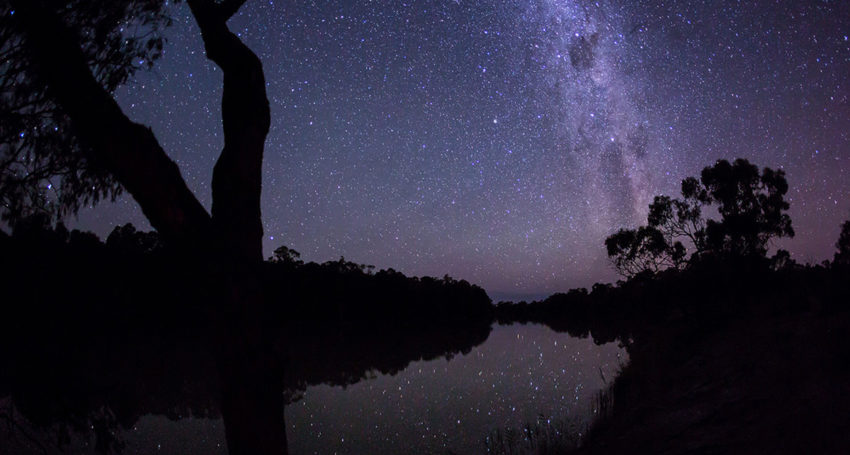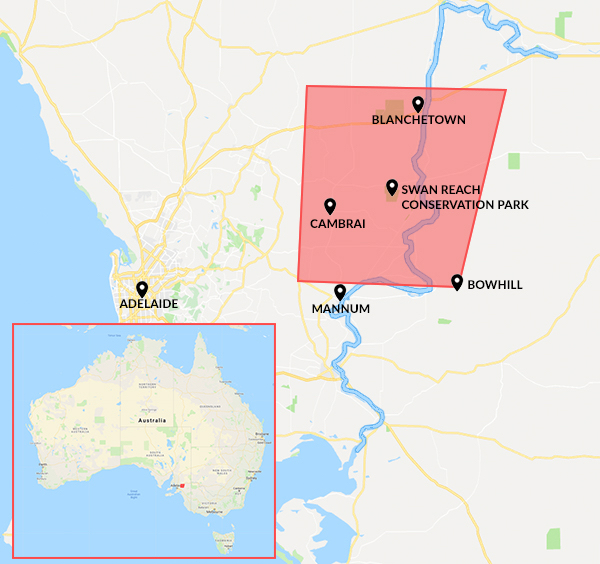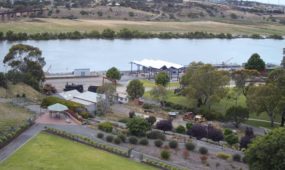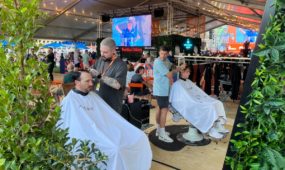Bright stars reveal dark secret Down Under
Tourism
The dazzling night sky above one of the darkest places on earth is one step away from becoming an official drawcard for international stargazers.

Sign up to receive notifications about new stories in this category.
Thank you for subscribing to story notifications.

Environmentalists and astronomers in South Australia will lodge a final application with the International Dark Sky Association in May in a bid to have a vast section of countryside just 120km from the state’s capital Adelaide declared a Dark Sky Reserve.
If successful, the 2300sq km River Murray Dark Sky Reserve would become just the second officially sanctioned International Dark Sky Place in Australia. More stars – including a better view of the Milky Way – can be seen in southern skies than in the Northern Hemisphere.
The South Australian site is shadowed from the lights of Adelaide and the Barossa Valley by the Mount Lofty Ranges.
A core site near the centre of the reserve is being proposed at the 2000ha Swan Reach Conservation Park while some events will still be held at the more established Meldanda campground, near the town of Cambrai, on the western side of the area.
Mid Murray Landcare Group Chairman Chris Tugwell said the site’s location near existing tourist attractions such as the River Murray and within a 90-minute easy drive of a major city made it an ideal tourist destination.
Light is measured on a scale of 0-22, where 22 is total darkness. Tugwell said recent testing at Swan Reach Conservation Park returned a result of 21.99.
“You would only get darker than that in a cave so it’s incredibly dark and it’s also a place that is completely undeveloped and it’s protected into the future because it’s a conservation park,” he said.
“One of the great things about Swan Reach Conservation Park is that there is absolutely nothing there – no buildings and no lights – but that also means there aren’t any facilities yet.
“We will still use Meldanda for events and that’s still incredibly dark. On the same night that we got the 21.99 at Swan Reach it was 21.95 at Meldanda and it has facilities and campsites so it is much better set up to visit whereas the Swan Reach Conversation is there to protect the region into the future.”

The proposed River Murray Dark Sky Reserve in South Australia is seeking international accreditation.
The reserve falls entirely in the Mid Murray Council area and is also supported by the Astronomical Society of South Australia. The council completed a Light Management Plan, which supports the River Murray Dark Sky Reserve application, in April.
An International Dark Sky Reserve can be on public or private land and must possess an exceptional or distinguished quality of starry nights and nocturnal environment that is specifically protected for its scientific, natural, educational, cultural, heritage and/or public enjoyment.
There are 13 Dark Sky Reserves in the world with the only two in the Southern Hemisphere located in New Zealand and Namibia. There are also dozens of generally smaller Dark Sky Parks, mainly in North America.
Warrumbungle National Park in New South Wales was declared Australia’s first Dark Sky Park in 2016. However, its location 500km northwest of Sydney makes for a long six-hour journey by car.
About 200-300 stars can typically be seen in Southern Hemisphere urban areas whereas an estimated 2000-3000 can be seen from the proposed South Australian reserve.
South Australia is known for its natural beauty and clean fresh food and wine. It includes areas such as Kangaroo Island, Flinders Ranges, Port Lincoln, Barossa Valley and the River Murray, Australia’s largest river system.
The state also has a strong link with space. Late last year Adelaide was announced as the home of the Australian Space Agency, to which a $6 million Mission Control Centre for small satellite missions and an educational Discovery Centre was added in March. It has also been a significant player in the nation’s space industry and is home to major Tier 1 defence companies and several emerging space start-ups, including Fleet Space Technologies, Inovor Technologies and Myriota.
Mid Murray Landcare initially lodged an interim application with IDSA in late 2017, which raised a number of questions about the proposal.
Tugwell said a number of telescopes had already been donated and would help the reserve have an educational focus for visiting school groups.
He said a letter of support from utility SA Power Networks committing to the appropriate replacement of street and highway lights into the future was among the last hurdles needed to be overcome before the final application could be submitted ahead of the May 27 deadline.
“There are only about 300 lights in the entire area so it’s not exactly a large number and we think it’s going to be fairly easy to manage,” Tugwell said.
“The other part is setting up a demonstration site for businesses and landholders so they can see Dark Sky lighting and hopefully change their lights over in time.
“We feel we’re very close to the finish line and then we can really do some promotion to let people know about it and hold a series of astronomical events every year.
“The fact that there is a space agency and mission control based here (in South Australia) and the added interest in space science that it brings really gives a huge boost to our project.”
Jump to next article



